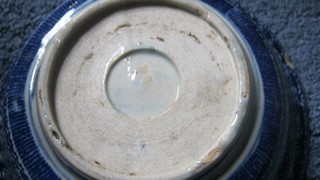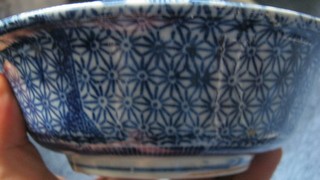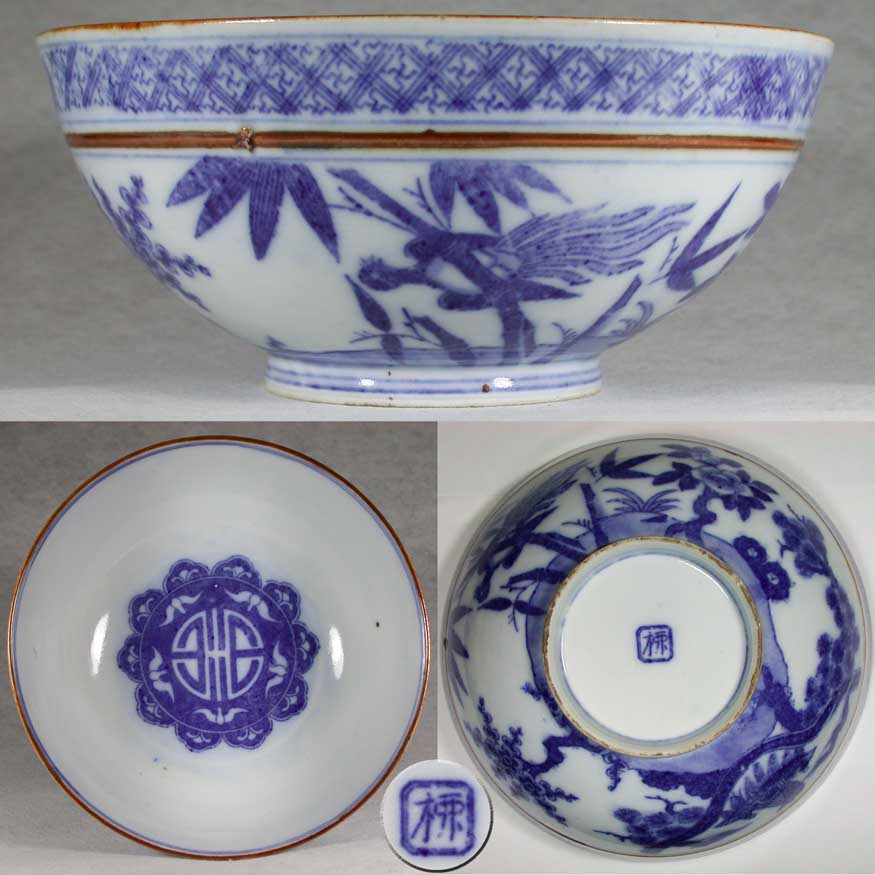
|
Subject:Re: Chinese porcelain
Posted By: Bill H Thu, Oct 20, 2011
'Replica' is one of those words that should be used sparingly when talking about Japanese and Chinese ceramics. 'Design Continuation' is the operative term in cases where no fraud is intended.
The process of perpetuating certain forms and decorative designs rests in the iconographic nature of the repeated elements; it is driven by the symbolism of lotuses, cranes, peonies, immortals and hundreds of other images that add a peculiarly Chinese, Japanese, religious or other auspicious flavor to the pattern.
The way such images are presented is canonized within the national psyche in these countries, particularly in the case of Buddhas, immortals or lucky gods, whose physical and other attributes are chiseled in stone just as firmly as those of John Bull in England, Uncle Sam in the USA and other such national icons everywhere.
In China and Japan these icons have gained their substance over many centuries. However, subtle stylistic shifts have occurred with changes of dynasties and reigns, and under foreign influences, the latter exemplified by the absorption of European styles and industrial techniques and materials brought by Jesuit missionaries at the courts of early Qing emperors.
In the case of surie inbande, Dutch traders in Japan handed over essential technology for making transfer-decorated ceramics not long after the process was developed in England during the late 1700's. The Japanese found it advantageous to adopt the process right away, because its less labor-intensive nature was better-suited to their smaller labor pool. While the Chinese persisted in hand-decorating ceramics until the early 20th century, the Japanese were turning transfer-decoration of these wares into an indigenous art form.
Best regards,
Bill H.


|
 Chinese porcelain
Chinese porcelain  ( China & Japan ) - johnalden - Oct 13, 2011 (10:33 AM)
( China & Japan ) - johnalden - Oct 13, 2011 (10:33 AM)  Re: Chinese porcelain - Cal - Oct 13, 2011 (11:09 PM)
Re: Chinese porcelain - Cal - Oct 13, 2011 (11:09 PM)  Re: Chinese porcelain - Bill H - Oct 13, 2011 (11:38 PM)
Re: Chinese porcelain - Bill H - Oct 13, 2011 (11:38 PM)  Re: Chinese porcelain - johna - Oct 15, 2011 (11:13 AM)
Re: Chinese porcelain - johna - Oct 15, 2011 (11:13 AM)  Re: Chinese porcelain - mikeoz - Oct 15, 2011 (10:59 PM)
Re: Chinese porcelain - mikeoz - Oct 15, 2011 (10:59 PM)  Re: Chinese porcelain - Emiko - Oct 16, 2011 (09:38 AM)
Re: Chinese porcelain - Emiko - Oct 16, 2011 (09:38 AM)  Re: Chinese porcelain
Re: Chinese porcelain  - Bill H - Oct 17, 2011 (02:45 AM)
- Bill H - Oct 17, 2011 (02:45 AM)  Re: Chinese porcelain - Emiko - Oct 18, 2011 (10:52 AM)
Re: Chinese porcelain - Emiko - Oct 18, 2011 (10:52 AM)  Re: Chinese porcelain - john a. - Oct 19, 2011 (10:11 AM)
Re: Chinese porcelain - john a. - Oct 19, 2011 (10:11 AM)  Re: Chinese porcelain - Bill H - Oct 20, 2011 (07:04 PM)
Re: Chinese porcelain - Bill H - Oct 20, 2011 (07:04 PM)  Re: Chinese porcelain - Johna - Oct 21, 2011 (01:13 PM)
Re: Chinese porcelain - Johna - Oct 21, 2011 (01:13 PM) 


